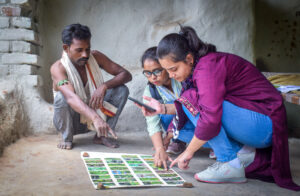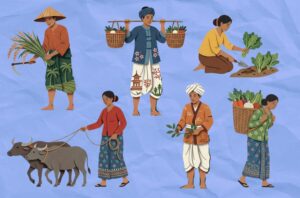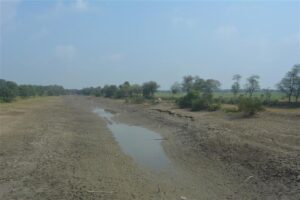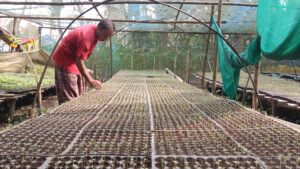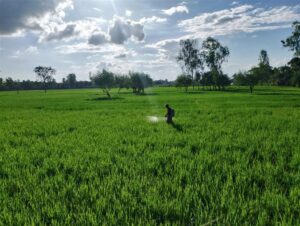By Waseem Hussain, Mahender Anumalla, Margaret Catolos, Joie Ramos, Ma Teresa Sta. Cruz, and Myrtel Valenzuela
In a landmark study published in The Plant Genome, IRRI scientists unveiled a next-generation flood-tolerant rice germplasm that outperforms current SUB1A varieties by 40–50% in submergence tolerance. This germplasm also exhibits high stagnant flooding tolerance, a trait lacking in SUB1A varieties.
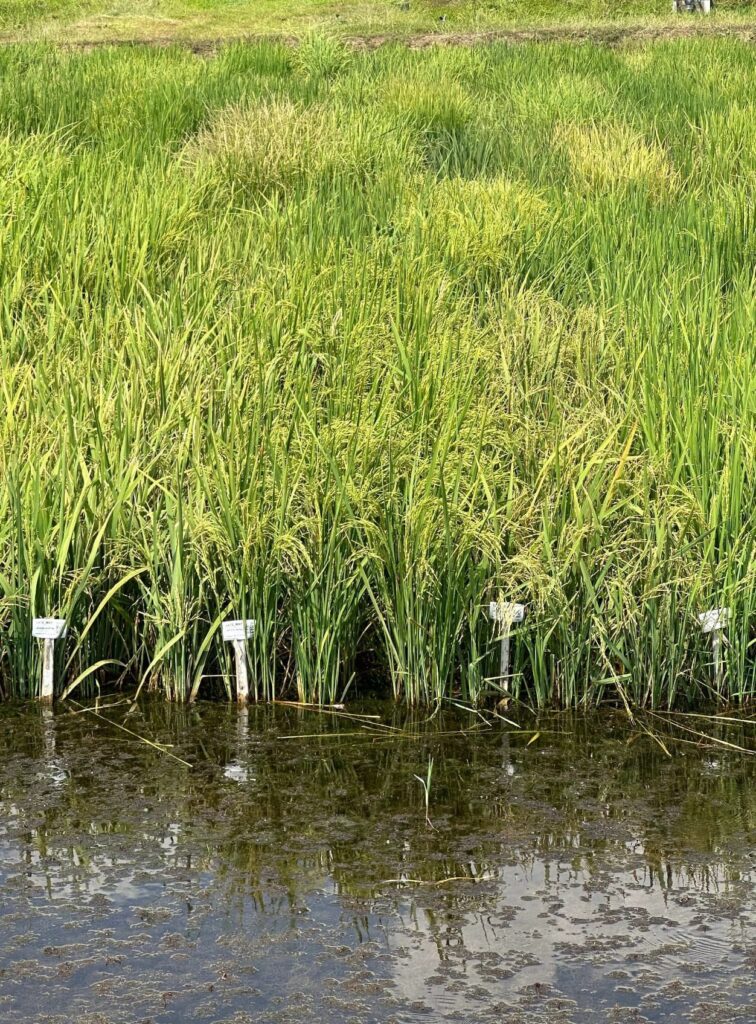
Floods Threaten Asia’s Rice Bowl—And SUB1A Alone Isn’t Enough Anymore
Each year, 21 million hectares of rice fields across Asia are exposed to flooding, threatening both food security and rural livelihoods. The discovery of the SUB1A gene 25 years ago marked a significant breakthrough, enabling the development of flood-tolerant rice through marker-assisted breeding.
However, progress has since slowed. The SUB1A-based varieties remain limited to short-term submergence (less than 10 days) and are highly sensitive to different flood scenarios. Yields decline sharply when flooding occurs at later growth stages, and adoption has been limited in many regions.
As climate-driven flood patterns become more unpredictable, the need for rice varieties with broader and more durable flood tolerance is increasingly urgent. Moving beyond a single-gene approach is essential to strengthen resilience against both submergence and stagnant flooding.
IRRI’s Next-Gen Germplasm: A Leap Forward in Flood Resilience
To address this gap, IRRI breeders have developed a new generation of flood-tolerant rice that could make a major difference in rice-growing areas across Asia and Africa. These new lines produce high yields, have superior agronomic traits, and good grain quality, and can survive underwater for up to three weeks with more than 85 percent survival—far beyond what SUB1A-based varieties can achieve.
What makes this development especially important is its dual tolerance; these new rice lines are suited to short-term flooding and also stagnant flooding, which current SUB1A varieties cannot withstand.
This breakthrough builds on years of research. Since 2019, IRRI scientists have studied more than 6,000 rice types from the institute’s collection, testing them under 21-day submergence and stagnant flooding conditions. From this effort, they identified 89 top-performing lines that showed 40 to 50 percent greater tolerance than SUB1A. These lines also offer a rich pool of genetic diversity that can support future breeding efforts to improve flood resilience in rice.
Flood Tolerance: A Challenge Conquered
Flood tolerance in rice has made significant progress, with IRRI developing new dual-tolerant materials that show strong potential to enhance rice production in flood-prone regions.
The new generation of flood tolerant materials are undergoing multi-location testing in collaboration with NARES partners in India and Bangladesh. Initial results from these field trials have been promising, with partners in India reporting notable performance of the improved materials.
Dr. Suman Debnath, Assistant Botanist at West Bengal Agricultural Service (WBAS), Rice Research Station, noted that “the new materials tested last year performed exceptionally well even after 21 days of submergence.”
In Malda, the materials also demonstrated strong adaptability under local field conditions. Dr. Navin Pradhan, Scientist and Economic Botanist I at WBAS, reported high survival rates, good adaptability, and strong yield potential under flood stress—making them well suited for the flood-prone areas of Malda and West Bengal.
In Odisha, the genotypes showed not only survival but also structural resilience and productivity. Dr. Sushanta Kumar Dash, Principal Scientist in Genetics and Plant Breeding at the ICAR National Rice Research Institute, observed that several genotypes survived up to 20 days of flooding and exhibited traits beyond those offered by SUB1A.
“Some also showed lodging tolerance and yielded 3 to 5 tons per hectare in lowland, semi-deep areas,” he added.
These promising results highlight the potential of IRRI’s new germplasm to support climate-resilient rice farming at a scale.
About the Publication
To learn more about the development of this germplasm and its potential to reshape future flood resilience in rice, refer to the open-access publication:
Anumalla, M., Singh, U. M., Verma, G., Verma, R. P., Dixit, S., Venkateshwarlu, C., & Kumar, A. (2025). Future flooding-tolerant rice germplasm: Resilience afforded beyond SUB1A gene. The Plant Genome, 18(1), e70040. https://doi.org/10.1002/tpg2.70040

